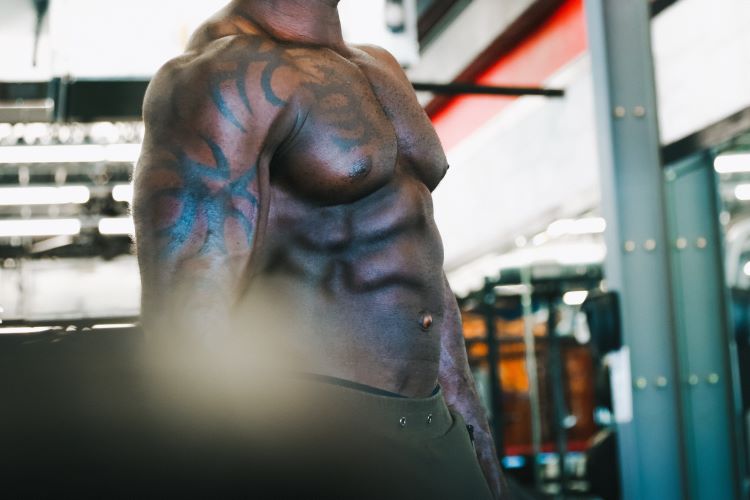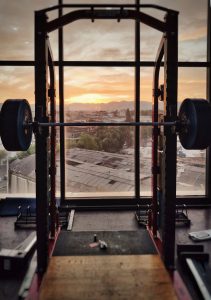Introduction
Front squats are a popular strength training exercise that primarily targets the lower body. However, their impact extends beyond just the legs. This article explores the connection between front squats and abdominal muscles, shedding light on whether they can help you achieve a chiseled core.
The Mechanics of Front Squats
Front squats involve lifting a barbell with a clean grip, resting it on the front of your shoulders, and performing a squat. The core of the exercise is maintaining an upright posture, which significantly engages your abdominal muscles. This engagement is crucial for the success of the exercise.
Muscle Engagement in Front Squats
Front squats engage various muscle groups, including the quadriceps, hamstrings, glutes, and lower back. While these are the primary targets, the core plays a vital stabilizing role. The abdominal muscles, including the rectus abdominis and the transverse abdominis, are responsible for stabilizing the spine during the squat.
Do Front Squats Build Abs?

Yes, front squats can contribute to building stronger and more defined abs. The rectus abdominis, often referred to as the “six-pack” muscles, are highly engaged throughout the exercise. When performed correctly, front squats help to increase the tension and workload on these muscles, leading to improved strength and definition over time.
To maximize the impact of front squats on your abs, it’s essential to maintain proper form. Ensure that the barbell is resting on the front of your shoulders and that your back remains upright throughout the movement. This will place a significant load on your core muscles, promoting their development.
While the traditional front squat is highly effective, there are variations that can further target your abdominal muscles. Goblet squats, Zercher squats, and Bulgarian split squats are examples of front squat variations that engage your core even more.
Front squats offer a range of benefits, including improved leg strength, enhanced core stability, and increased overall functional strength. This makes them a valuable addition to any workout routine, especially for those looking to strengthen their abs.
To accelerate your progress, consider combining front squats with dedicated core exercises. Planks, hanging leg raises, and cable crunches are great choices to complement your front squat routine and further target your abs.
There are some misconceptions about front squats, with some believing they solely focus on leg development. However, as discussed, the core engagement in front squats is substantial, dispelling this myth.
Many individuals have incorporated front squats into their workout routines and experienced impressive results in terms of both leg and core strength. These success stories are a testament to the effectiveness of front squats for building abs.
For those looking to maximize their abdominal development, ensure you are eating a balanced diet and getting enough rest to support muscle growth. Additionally, stay consistent with your training and gradually increase the weight and intensity of your front squats.
Safety should always be a top priority. It’s essential to start with a manageable weight and progressively increase it as your strength improves. Proper warm-up and cool-down routines are also crucial to avoid injuries.
In conclusion, front squats are not just a leg exercise but a valuable tool for building stronger and more defined abs. When performed with proper form and consistency, they can contribute significantly to your core development. So, if you’re looking to enhance your abdominal strength, don’t overlook the benefits of front squats.
Frequently Asked Questions
1. Are front squats suitable for beginners?
Front squats can be challenging for beginners, but with proper guidance and practice, they can be incorporated into your routine.
2. How often should I do front squats for noticeable ab development?
To see significant results in your abs, aim to include front squats in your workout routine at least two to three times a week.
3. Can I do front squats with dumbbells if I don’t have a barbell?
Yes, you can perform front squats with dumbbells, though the stability and balance may differ from using a barbell.
4. What other exercises complement front squats for core development?
Core exercises like planks, hanging leg raises, and cable crunches can be great additions to your routine.
5. How long does it take to see visible changes in my abs with front squats?
The timeline for visible ab development varies from person to person but can typically take a few months of consistent training.

Now that we’ve covered the many aspects of front squats and their potential to build stronger abs, it’s important to note that consistent effort and dedication are key. Achieving a well-defined core takes time and patience, and front squats can be a valuable addition to your workout routine to help you reach your goals.
Front squats not only strengthen your legs but also play a pivotal role in enhancing your core stability. This is especially important for athletes, powerlifters, and those seeking overall functional strength.
As with any exercise, it’s crucial to prioritize safety and form. If you’re new to front squats, consider seeking guidance from a fitness professional to ensure that you’re performing them correctly and safely. Starting with a manageable weight and gradually increasing it as your strength improves is essential.
Incorporate front squats into your workout regimen, and combine them with other core-focused exercises to accelerate your abdominal development. Don’t forget that a well-balanced diet and adequate rest are equally important in achieving a strong and defined core.
Remember to, Flex at Ur Prime.





